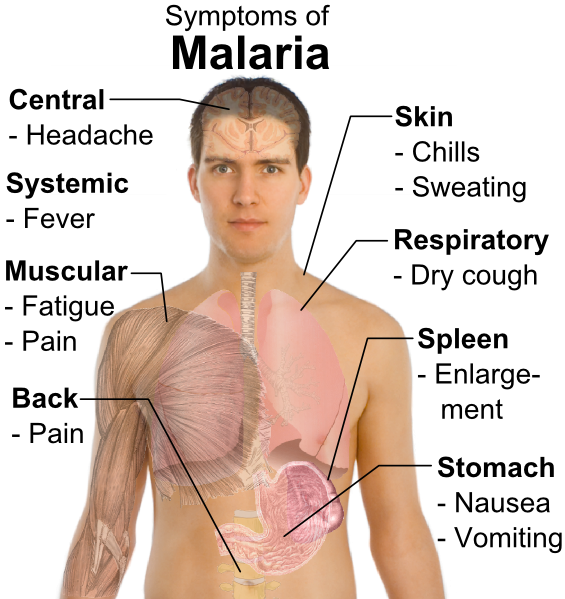Main symptoms and complications
What are the main symptoms… ?

Keywords:
hepatomegaly, high fever, splenomegaly, jaundice, abdominal tenderness, chills, malaise, headache, myalgias, dry cough, gastrointestinal problem, lymphadenopathy, organ failure, cerebral malaria.
Symptoms of malaria generally show 10 to 4 weeks after the infection, and they can be different depending on the species of Plasmodium.
However, this parasitosis is almost always characterized by high fever (usually above 38°C) and splenomegaly.
Less often, hepatomegaly, jaundice and abdominal tenderness are noted. Other nonspecific symptoms are chills, malaise, headache, myalgias, dry cough and gastrointestinal problems.
Even rash and lymphadenopathy may be present (Looareesuwan, 1999).
…and the complications?
Plasmodium falciparum malaria represents the most severe form in terms of morbidity and mortality. The infection caused by this species of parasite, in fact, can lead to cerebral malaria. It occurs when parasite-filled blood cells block tiny blood arteries in the brain, resulting in brain swelling or damage. Seizures and coma are possible side effects of cerebral malaria. Plasmodium falciparum malaria can also induce organ failure by causing damage to the kidneys, liver, and spleen.
If fluid builds up in the lungs, it can lead to respiratory problems too. Malaria could be also the cause of anaemia and hypoglycemia.
The peculiarity of Plasmodium vivax instead is that can give rise to recurrences due to forms that remain silent in the liver (hypnozoites) and which can be reactivated months after the primary attack.
In both cases, if malaria isn’t treated properly, it can even lead to death.
Sources:
1. Looareesuwan, S. (1999) Malaria. In: Looareesuwan, S., Wilairatana, P., editors. Clinical Tropical Medicine. 1st ed. Bangkok, Thailand: Medical Media; pp. 5-10